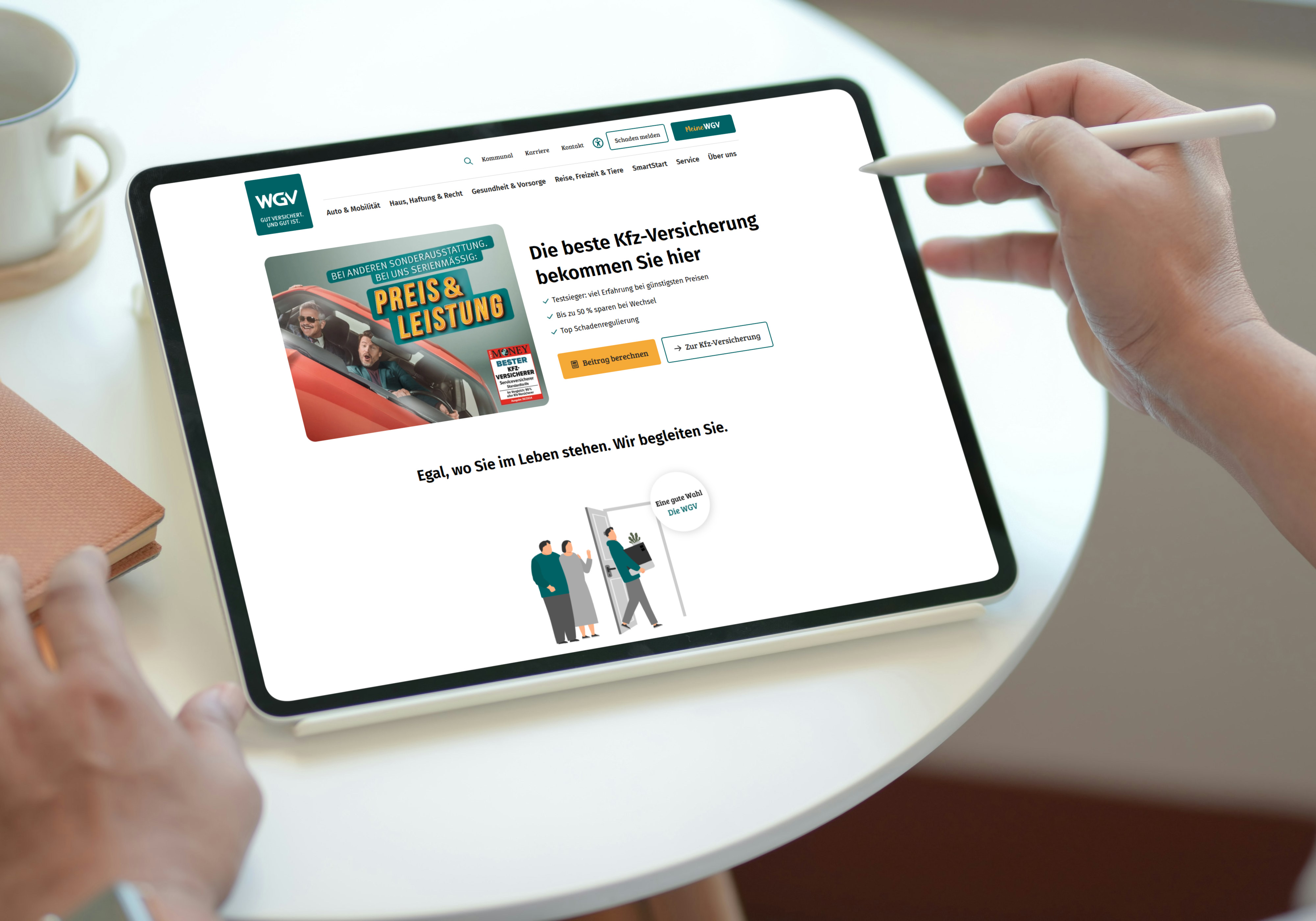Project shortcuts
The aim of the project was to completely relaunch the wgv.de website in order to strengthen WGV's digital presence and offer customers an improved online experience. In addition to a modern and accessible design, the focus was on an intuitive user experience that promotes both user-friendliness and customer loyalty. We conducted two requirements workshops for the concept and design and further developed the existing modules based on the requirements. For the technical implementation of the project, we used the latest version of First Spirit and migrated it to the cloud. This ensures a powerful and secure basis for the operation of the website. In addition, our front-end development framework Frontwerk was used.
Phase 1: Concept and design process
-
Requirements workshops
At the start of the project, we held two detailed workshops with WGV. The aim was to comprehensively record the client's requirements and develop a shared vision for the project. In doing so, we worked out specific needs and expectations for the website.
-
Target group definition
We then defined the relevant target groups. This analysis served as the basis for creating a user experience that is tailored to the needs and expectations of WGV's customers.
-
Analysis of the components and definition of the page templates
In the third step, we analyzed the existing website components and developed a structure for the new page templates based on this. We designed these in such a way that they are flexible, expandable and easy to maintain.
-
Inventory and further development
We systematically reviewed the existing modules of the previous website. Based on the new requirements, we developed these further to meet the new standards and the desired user experience.
-
UX/UI: Systematic structure
For the user experience (UX) and user interface (UI), we relied on a systemic structure. We developed a coherent design system that combines modern aesthetics with functional requirements. The focus was on intuitive and consistent user guidance.
-
Creation of prototypes
To ensure transparent and efficient coordination, we developed interactive prototypes. These were used to present and approve the design before development began. This allowed everyone involved to get a feel for the final website at an early stage and incorporate any changes.
Phase 2: Technical requirements survey
-
Backlog Refinement
Creation of user stories and technical acceptance criteria:
Our aim was to create clearly formulated user stories that facilitate development work, improve quality assurance and enable transparent acceptance by the customer. -
Presentation to the entire development team
- Knowledge transfer:
We presented the requirements to the entire team in order to reduce changeover times in the event of failures and ensure knowledge transfer. - Quality assurance:
By identifying potential side effects and avoiding duplication of work, we were able to increase efficiency within the team. - Joint estimation:
The team estimated the user stories together, which enabled realistic time and resource planning.
- Knowledge transfer:
Phase 3: Agile development and iterative delivery
-
Milestone planning and forecast
Based on the backlog, we defined clear development goals for each milestone to ensure structured and transparent implementation.
-
Agile, iterative development
Development took place in two-week sprints, which enabled continuous delivery and regular feedback.
-
Validation of the team velocity
After the end of each sprint, we reviewed the team's velocity in order to continuously optimize planning and the development process.
-
Forecast based on backlog and velocity
Regular updates to the forecast ensured transparency with regard to delivery capability and enabled planning to be adjusted efficiently.
-
Sprint and status reports to the customer
To ensure close coordination, we produced detailed reports that kept the client informed of progress and the current status of the project.
Added value through the relaunch
Design and user experience
The new website was given a contemporary, user-centered layout. The aim was to provide customers with a first-class user experience. We made the design modern and visually appealing, while optimizing the navigation to enable faster access to information. The new website meets the requirements of conformance level AA according to the Web Content Accessibility Guidelines (WCAG).
Performance and security
First Spirit's cloud migration enabled us to create a modern infrastructure that sustainably improves the website's performance and security.
Documentation and transparency
The comprehensive project documentation in Frontwerk enables transparent tracking of progress and ensures that all project participants are informed about the current status at all times.

